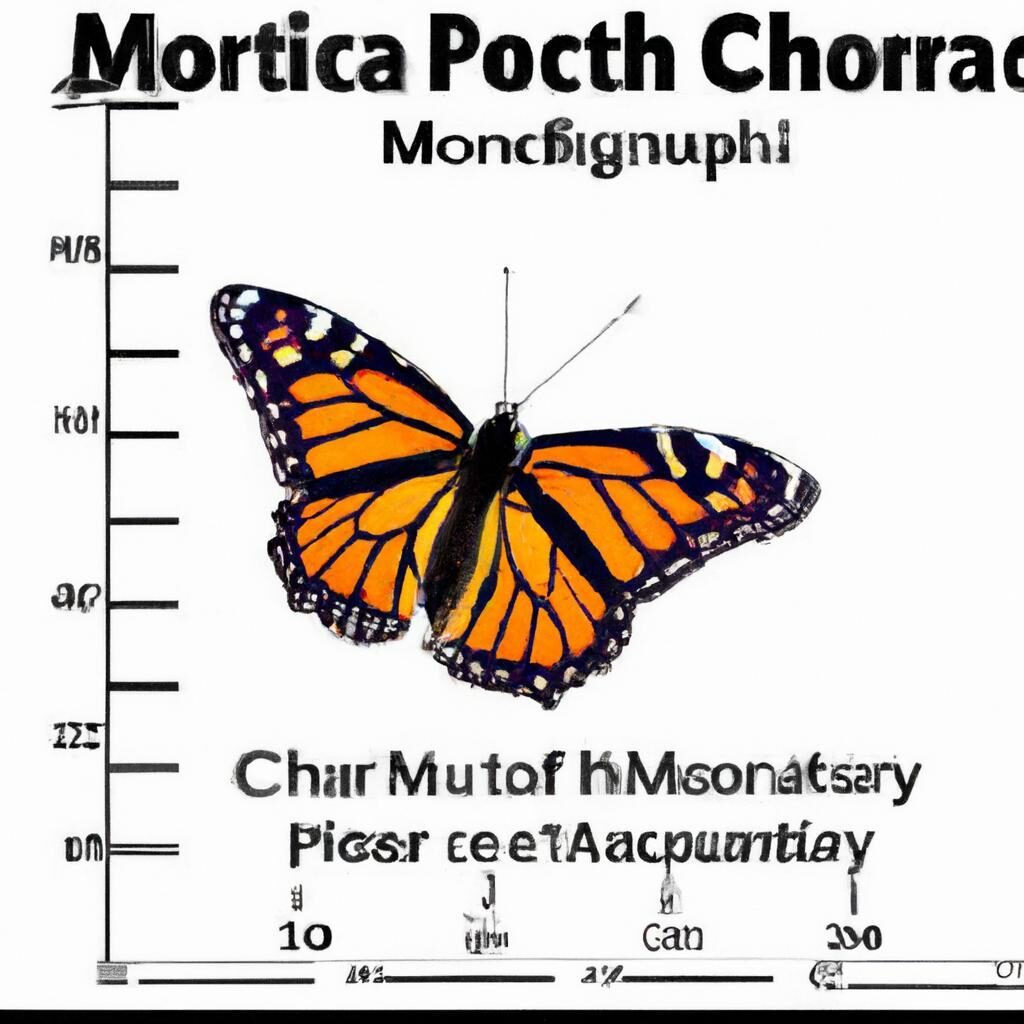In a concerning turn of events, the population of monarch butterflies in the eastern United States has hit a record low. This decline is a troubling indicator of the challenges facing these iconic insects, and calls for urgent action to protect their dwindling numbers.
Table of Contents
- – The Decline of Monarch Butterfly Population in Eastern US: Causes and Implications
- – Factors Contributing to Record Low Monarch Butterfly Numbers
- – Urgent Conservation Efforts Needed to Save Monarch Butterfly Population in Eastern US
- Q&A
- The Conclusion
– The Decline of Monarch Butterfly Population in Eastern US: Causes and Implications
The Monarch Butterfly population in the Eastern US has plummeted to a record low, raising alarm among scientists and conservationists. This iconic species, known for its distinctive orange and black wings, has seen a dramatic decline in numbers due to a variety of factors.
Causes of the Decline:
– Habitat loss: The destruction of milkweed plants, essential for Monarch reproduction, has significantly impacted their ability to thrive.
- Climate change: Rising temperatures and unpredictable weather patterns have disrupted the Monarch’s migratory patterns and breeding cycles.
– Pesticide use: The widespread use of pesticides in agriculture has led to a decline in the availability of nectar sources for Monarchs.
Implications of the Decline:
– Ecological imbalance: Monarchs play a crucial role in pollination and are an important part of the food chain. Their decline could have far-reaching effects on the ecosystem.
– Cultural significance: Monarchs are a symbol of beauty and grace, with a deep cultural significance to many societies. Their decline could have a profound impact on our natural heritage.
– Economic impact: Monarchs are a major tourist attraction in some regions, contributing to local economies. A decline in their population could have negative consequences for businesses that rely on butterfly tourism.
| Year | Monarch Population |
|---|---|
| 2010 | 1 billion |
| 2021 | Less than 50 million |
– Factors Contributing to Record Low Monarch Butterfly Numbers
One of nature’s most iconic creatures, the monarch butterfly, is facing a crisis in the Eastern US. The latest data shows that the population of these majestic insects has reached a record low, causing concerns among scientists and conservationists. Factors contributing to this alarming decline are being closely examined in an effort to reverse this troubling trend.
Loss of Habitat: The destruction of milkweed plants, which serve as the main food source for monarch caterpillars, has significantly reduced the available breeding grounds for these butterflies. Urban development, agriculture, and deforestation have all contributed to the loss of crucial habitat, making it harder for monarchs to thrive and reproduce.
| Factor | Impact |
|---|---|
| Climate Change | Altered migration patterns and reduced availability of nectar sources. |
| Pesticide Use | Poisoning of butterflies and their food sources. |
Climate Change and Pesticides: The effects of climate change have disrupted the monarchs’ migration patterns, making their journey more perilous. Additionally, the widespread use of pesticides in agriculture has led to the poisoning of butterflies and their food sources. These combined factors have put immense pressure on the already fragile monarch population, pushing them to the brink of extinction.
– Urgent Conservation Efforts Needed to Save Monarch Butterfly Population in Eastern US
Experts are sounding the alarm as the Monarch Butterfly population in the Eastern US reaches a record low. Monarchs are vital pollinators and their decline is a serious threat to biodiversity in the region. Urgent conservation efforts are needed to save these iconic butterflies.
The loss of habitat due to urban development, agriculture, and climate change has greatly impacted the Monarch Butterfly population. They rely on milkweed plants for breeding, which are disappearing at an alarming rate. Additionally, pesticide use further threatens their survival. Without immediate action, we could see the Monarch Butterfly disappear from the Eastern US.
Conservation organizations are calling for increased efforts to protect Monarch Butterflies. Planting milkweed and other native plants, reducing pesticide use, and creating protected habitats are crucial steps to support their population recovery. It is up to all of us to take action and ensure the survival of these beautiful creatures for future generations.
Q&A
Q: What is the current status of the monarch butterfly population in the eastern US?
A: The monarch butterfly population in the eastern US has reached a record low.
Q: What are the factors contributing to the decline in the monarch butterfly population?
A: Loss of habitat, pesticides, climate change, and disease are among the factors contributing to the decline in the monarch butterfly population.
Q: Why is the decline in the monarch butterfly population concerning?
A: The decline in the monarch butterfly population is concerning because these butterflies play a crucial role in pollination and are an indicator of the health of our ecosystem.
Q: What steps can be taken to help conserve the monarch butterfly population?
A: Planting milkweed, reducing pesticide use, and protecting monarch butterfly habitats are some steps that can be taken to help conserve the monarch butterfly population.
Q: Is there hope for the recovery of the monarch butterfly population in the eastern US?
A: While the current situation is dire, there is hope for the recovery of the monarch butterfly population with sustained conservation efforts and public awareness.
The Conclusion
As the Monarch butterfly population in the Eastern US continues to decline, it is crucial that we take action to protect this iconic species. Conservation efforts must be ramped up to ensure the survival of these beautiful creatures for future generations. Let us not sit idly by while the Monarchs disappear from our skies. Our actions today will determine the fate of these delicate butterflies tomorrow. Stay tuned for updates on this critical issue and join us in the fight to save the Monarchs. Thank you for reading.

